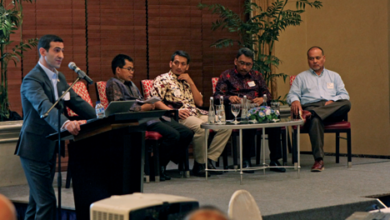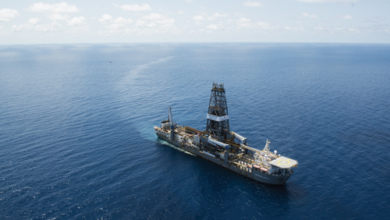Wirelines
US House Interior Appropriations Act Recognizes Industry’s Economic Contribution
On 14 July, the US House of Representatives passed H.R. 5538, the Interior Appropriations Act. In response, IADC President Jason McFarland said, “The passage of the Interior Appropriations Act with robust support for oil and gas provisions indicates that House members recognize the tremendous role the energy sector plays in ensuring America’s economic stability. IADC is pleased that the $32 billion measure, which will fund the Interior Department, EPA and other related agencies in fiscal year 2017, contains language that is supportive of oil and gas activities.
“Passage of several amendments restricting the Department of Interior from moving forward on several recent harmful regulations, including BSEE’s Well Control Rule, Arctic regulations, financial assurance, venting and flaring and methane regulations, and the BLM’s hydraulic fracturing rule is a recognition that imposing costly, prescriptive and duplicative regulations is unnecessary and impedes economic development.
“The approval of this bill is an important step forward in ensuring that oil and gas regulations are fair and sensible. IADC thanks those House members who voted in support of the energy industry and for the leadership of those members who proposed amendments to scale back these harmful regulations to help ensure America’s continued energy renaissance.”
Specifically, approved amendments that were supported by IADC include:
• #13 – Prohibits funds to be used to remove three Arctic sales from the 2017-2022 OCS Oil and Gas Leasing Proposed Program. Continued Arctic leasing is important to US energy and national security. The proposed lease sales should be retained in the 2017-2022 Five Year Leasing Program.
• #5 – Ensures that no money is permitted for the implementation of the Well Control Rule. Given the uncertainty with the rule and the fact that BSEE still has not responded to necessary questions for clarification, the rule is not ready to be implemented so BSEE needs more time.
• #4 – Prohibits the Secretary of the Interior from implementing, administering or enforcing any rule or guidance substantially similar to the proposed guidance that the Bureau of Ocean Energy Management (BOEM) made available for public comment on 22 September 2015 regarding financial assurances for oil and gas operations on the Outer Continental Shelf. The changes proposed and expected by the BOEM are not necessary to ensure financial assurances and will make it impossible for a number of entities to explore and produce US oil and natural gas.
• #37 – Prohibits funds to be used to finalize, implement or enforce new regulations on offshore Arctic energy exploration and development. The final DOI Arctic rules will continue to stifle offshore oil and natural gas production, and certain requirements may not improve safety and may inhibit innovation and technological advancements.
• #26 – Prohibits the use of funds to implement, administer or enforce the final rule, entitled “Hydraulic Fracturing on Federal and Indian Lands.” The courts recently struck down this Bureau of Land Management (BLM) hydraulic fracturing rule because it ruled the BLM lacks authority to regulate hydraulic fracturing.
• #44 – Prohibits funding from being used to implement, administer or enforce President Barack Obama’s administration’s National Ocean Policy. The National Ocean Policy was created by an executive order to circumvent Congress, which has voted again and again opposing the idea of an ocean policy that operates outside of governing federal statutes passed into law by Congress.
• #93 – Ensures no funds are provided to finalize or implement the National Fish and Wildlife Service (NWRS) rule, entitled “Management of Non-Federal Oil and Gas Rights.” The proposed rule, if promulgated in final, would mark a sea change in the management of non-federal oil and gas activities on NWRS lands. However, the authority claimed by the service to promulgate the proposed regulations is not as broad as the service assumes, so this USFWS proposal needs to be withdrawn.
• #41 – Prohibits funds from being used to designate a National Marine Monument in the EEZ via presidential proclamation. Designation of a national marine monument would unnecessarily limit multiple use to the detriment of potential energy production and security.
Click here to access H.R. 5538
US Senators Ask Department of Interior to Withdraw BOEM Air Quality Control, Reporting and compliance rule
In a 15 July letter to US Department of Interior (DOI) Secretary Sally Jewel, 17 US senators expressed concerns with the Bureau of Ocean Energy Management’s (BOEM) proposed air quality control rule.
In written remarks that echo industry’s concerns, the senators asked that DOI withdraw the proposal, noting that BOEM has failed to demonstrate that emissions from offshore oil and gas activities have significant effects on onshore air quality.
“BOEM is currently performing two air modeling studies that were commissioned at a cost of $4 million to taxpayers to inform BOEM as to whether or not any rulemaking was necessary,” the letter stated. “The results of these studies are not expected until 2017. BOEM must complete these studies to determine which state air quality impacts, if any, should be attributed to OCS authorized activities. If BOEM wishes to obtain a credible accounting of what should be regulated and what the compliance costs will be, the results of these studies would serve as a basis for assessments. Unless and until such studies are completed, peer reviewed and assessed, it is impossible for BOEM to put forth a credible cost/benefit analysis.”
US Coast Guard Issues Final Rule on Fire Protection, Detection and Equipment
The US Coast Guard recently issued a Final Rule that addresses the carriage, design and approval standards for fire protection, detection, extinguishing equipment and materials on vessels, outer continental shelf facilities, deepwater ports and MODUs.
Click here to access the 22 July US Federal Register.
BSEE, BOEM Issue Final Rule on Exploratory Drilling on Alaska OCS
The US Department of Interior, through the Bureau of Safety and Environmental Enforcement (BSEE) and the Bureau of Ocean Energy Management (BOEM), recently made available in the 15 July Federal Register a notice to establish requirements for exploratory drilling and related operations on the Outer Continental Shelf seaward of the state of Alaska.
This final rule is applicable only to MODUs conducting exploration drilling and focuses solely on the OCS within the Beaufort Sea and Chukchi Sea Planning Areas.
The rule becomes effective 60 days after publication.
Key provisions of the rule include requirements that each operator must:
• Develop an integrated operations plan (IOP) that addresses all phases of its proposed Arctic OCS exploration program and submit the IOP to BOEM at least 90 days in advance of filing its exploration plan (EP);
• Use only equipment or materials that are rated or de-rated for service conditions that can be reasonably expected during operations;
• Conduct a SEMS audit once per year for every year in which Arctic drilling is conducted;
• Employ real-time monitoring (RTM) with the capability to transmit data, as it is gathered, to a designated onshore location where it must be stored and monitored by qualified personnel who have the capability for continuous contact with rig personnel;
• Describe in their APD how they will utilize the relevant provisions of the best practices of API RP 2N Third Edition;
• Perform a pressure test of the BOP system on a 14-day cycle;
• Even if the MODU is designed and classed for Arctic conditions, perform an assessment for the specific environmental conditions during the planned window of operations (equipment on the MODU used to support the drilling operations should also be evaluated for suitability for Arctic conditions but should be evaluated using the appropriate standards for equipment operating in the Arctic environment, not a structural design standard for the Arctic region);
• Capture of all cuttings from operations that utilize petroleum-based mud and, at the discretion of the regional supervisor, capture of cuttings from operations that utilize water-based mud.
• Have access to and the ability to promptly deploy source control and containment equipment (SCCE) while drilling below, or working below, the surface casing;
• Have access to a separate relief rig located in a geographic position to be able to timely drill a relief well to kill and permanently plug an out-of-control well under the conditions expected at the site in the event of a loss of well control;
• Have the capability to predict, track, report and respond to ice conditions and adverse weather events;
• Effectively manage and oversee contractors; and
• Develop and implement an oil spill response plan (OSRP) that is designed and executed in a manner that accounts for the unique Arctic OCS operating environment and have the necessary equipment, training and personnel for oil spill response on the Arctic OCS.
Click here to access the 15 July Federal Register.
IADC joins IMCA, ECSA in letter to European Commission Joint Research center on extension of the scope of EU Product Safety Legislation
On 27 July, IADC, along with the International Marine Contractors’ Association (IMCA) and the European Community Shipowners’ Associations (ECSA), issued a letter to the European Commission concerning a study that the European Commission Joint Research Center issued in April 2016.
That study assessed the impacts of possible amendments to the ATEX, Machinery and Pressure Equipment Directives, with respect to equipment installed and used on mobile offshore drilling units (MODUs) for the offshore oil and gas industry.
In the letter, the associations noted that the burden would almost solely be offset on the end users of the equipment, drilling contractors, and that it remains undocumented that an extension would have a benefit in respect of major accidents. The letter goes on to note that “the existing rules and standards for MODU equipment already ensure a very high MODU safety standard. Any extension of EU product safety legislation is unlikely to produce an even higher safety standard or reduce the probability or frequency of major accidents on MODUs.”
Implications include market access and mobility, cost and resources, and supply shortages that would be associated with any amendments. The letter includes an annex, which analyzes and highlights certain limitations in the research that, in some cases, led to unwarranted and unjustified conclusions in the Joint Research Center report.
Click here to read the joint letter.
IOGP Publishes Technical Notes to drilling hazard site survey Guidelines
The International Association of Oil and Gas Producers (IOGP) has published technical notes to supplement the Guidelines for the Conduct of Offshore Drilling Hazard Site Surveys, published in 2013. The guidelines describe practices for conducting geophysical and hydrographic site surveys of proposed offshore drilling locations. The new technical notes (IOGP No. 373-18-2) provide extensive supporting technical information to the guidelines. This includes background theory on various phases in delivery of a site survey project, on the vessels and equipment used to acquire site survey data and on the data processing and interpretation techniques.





